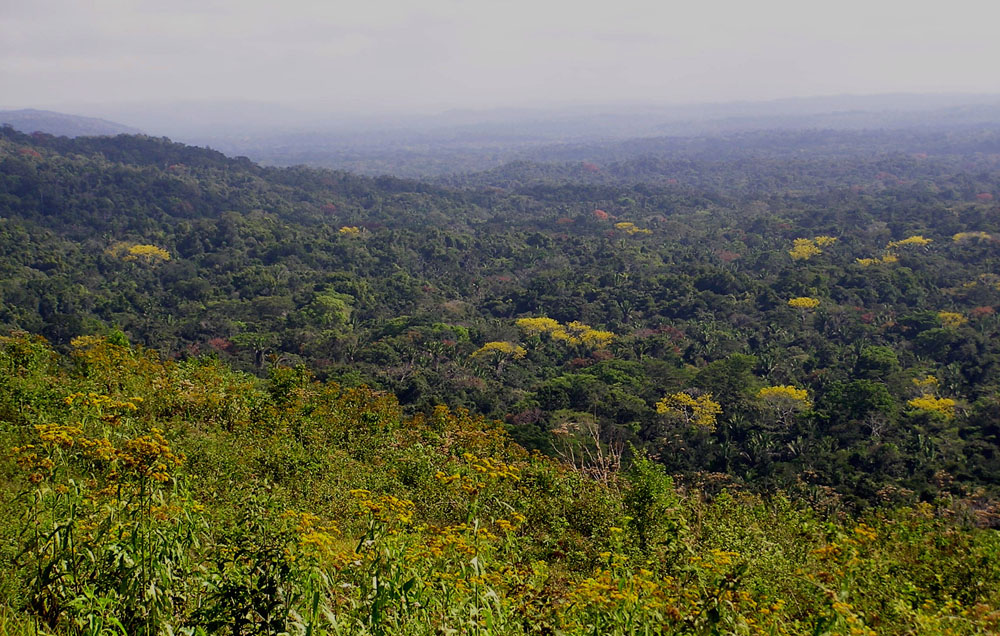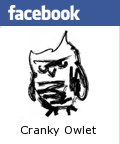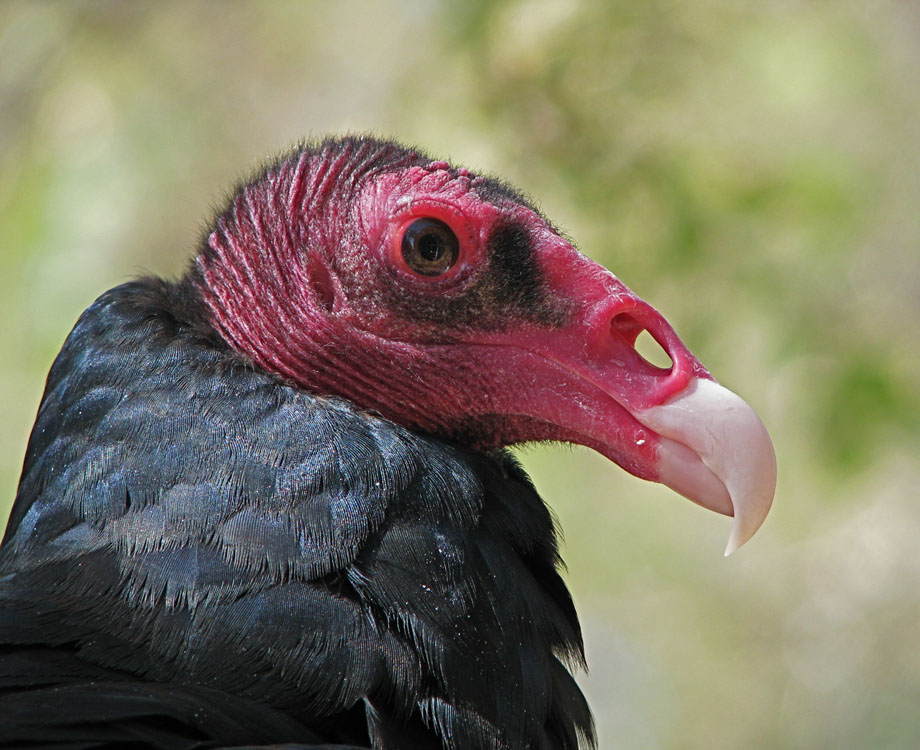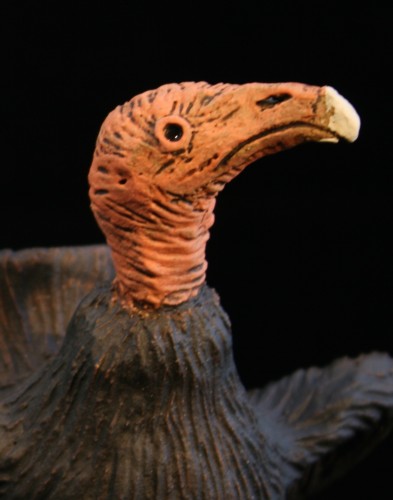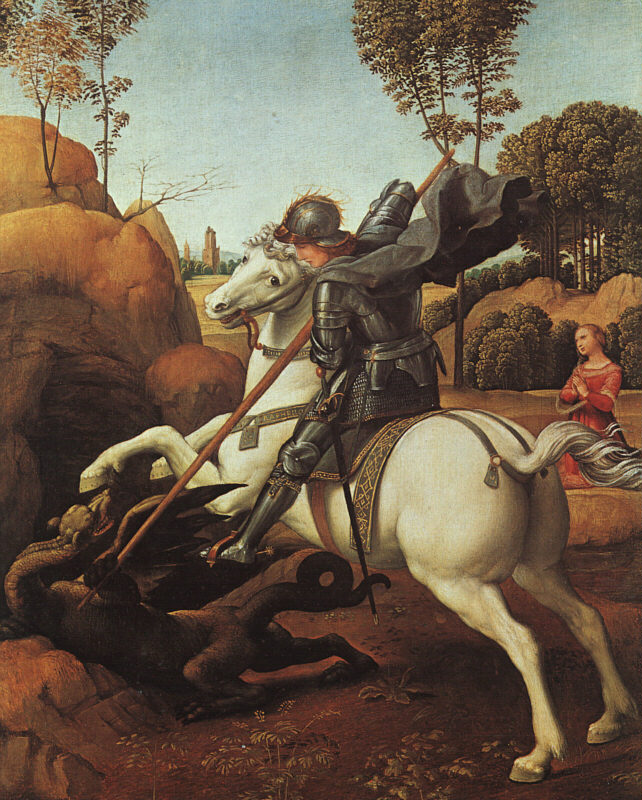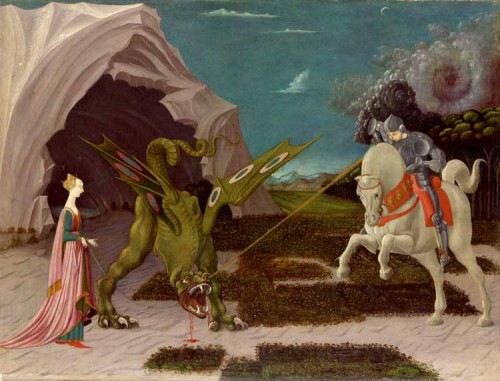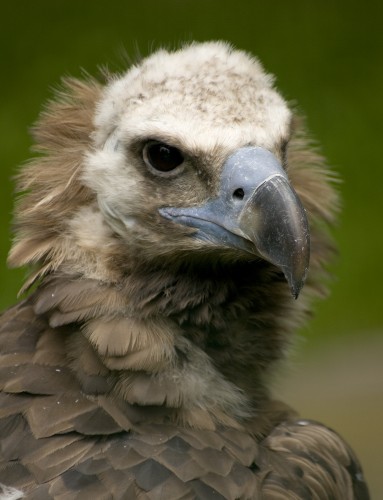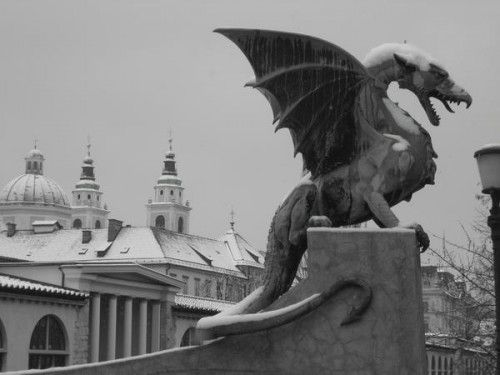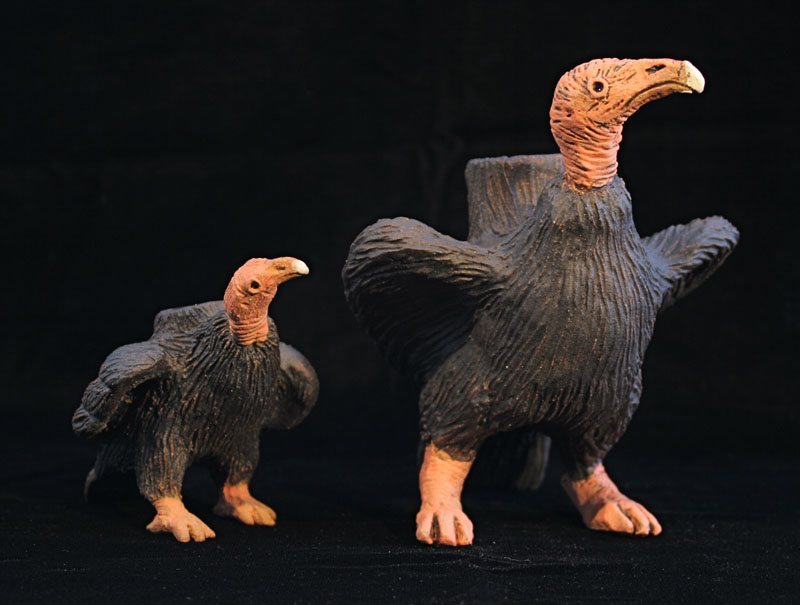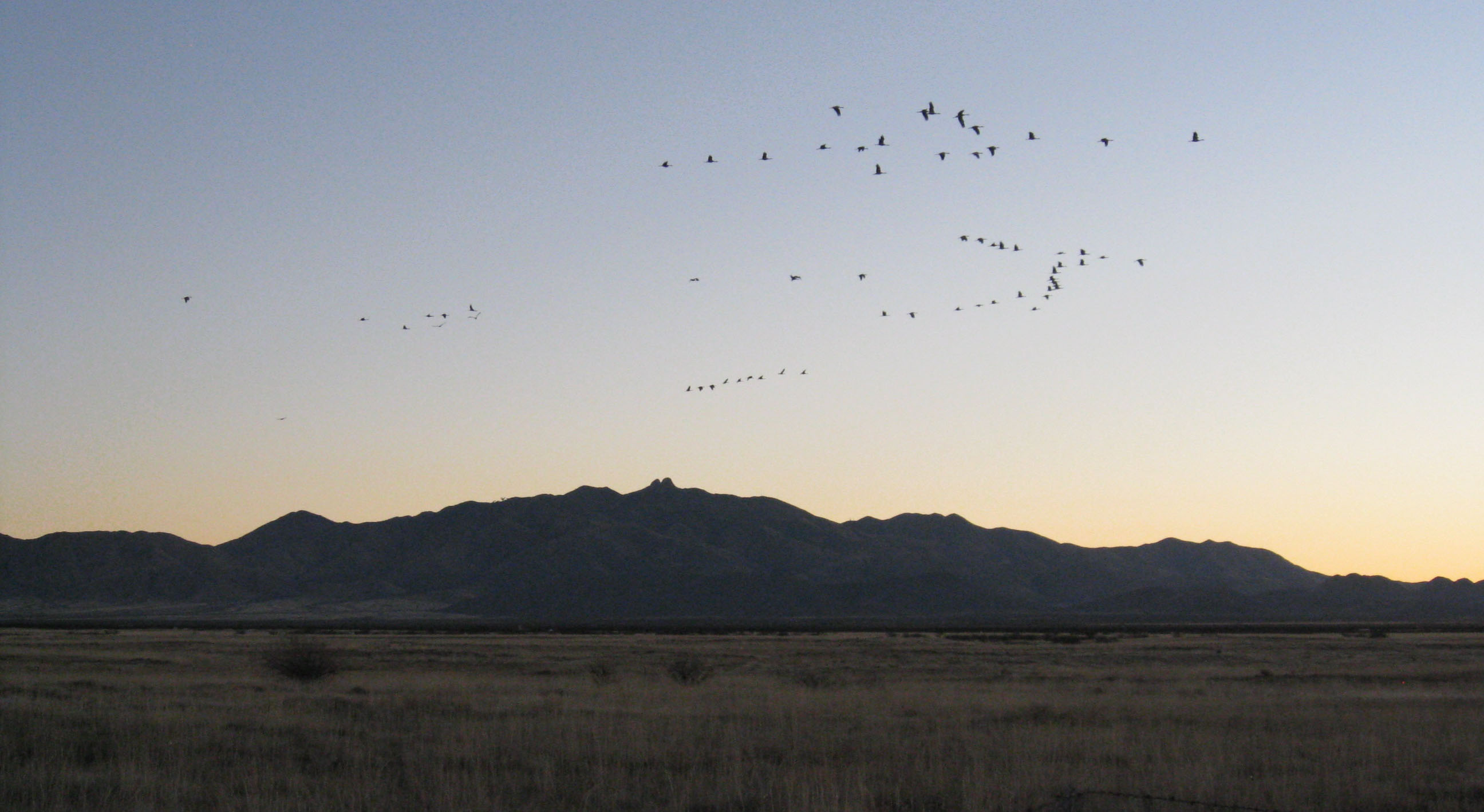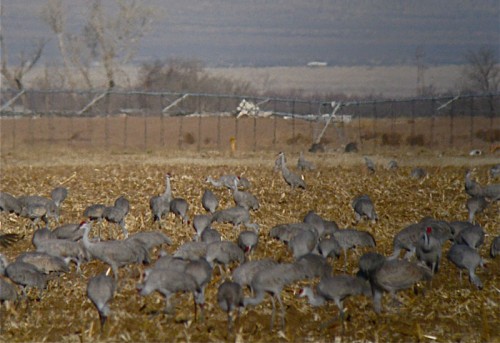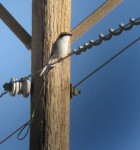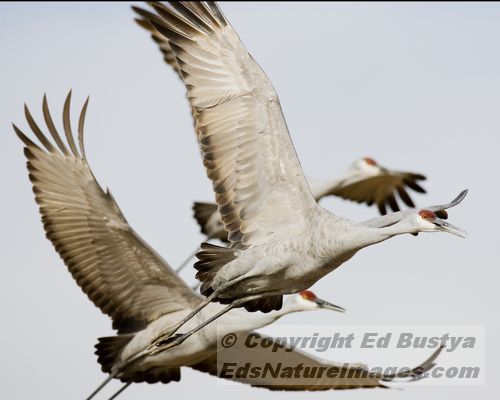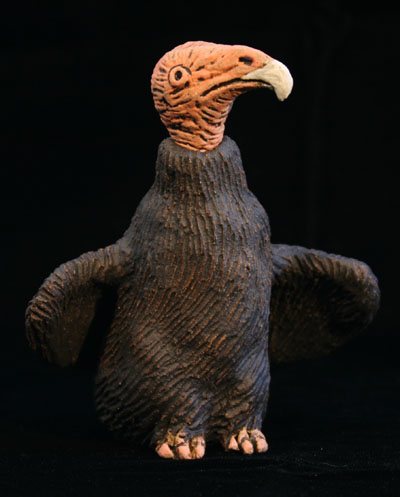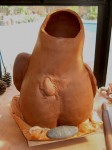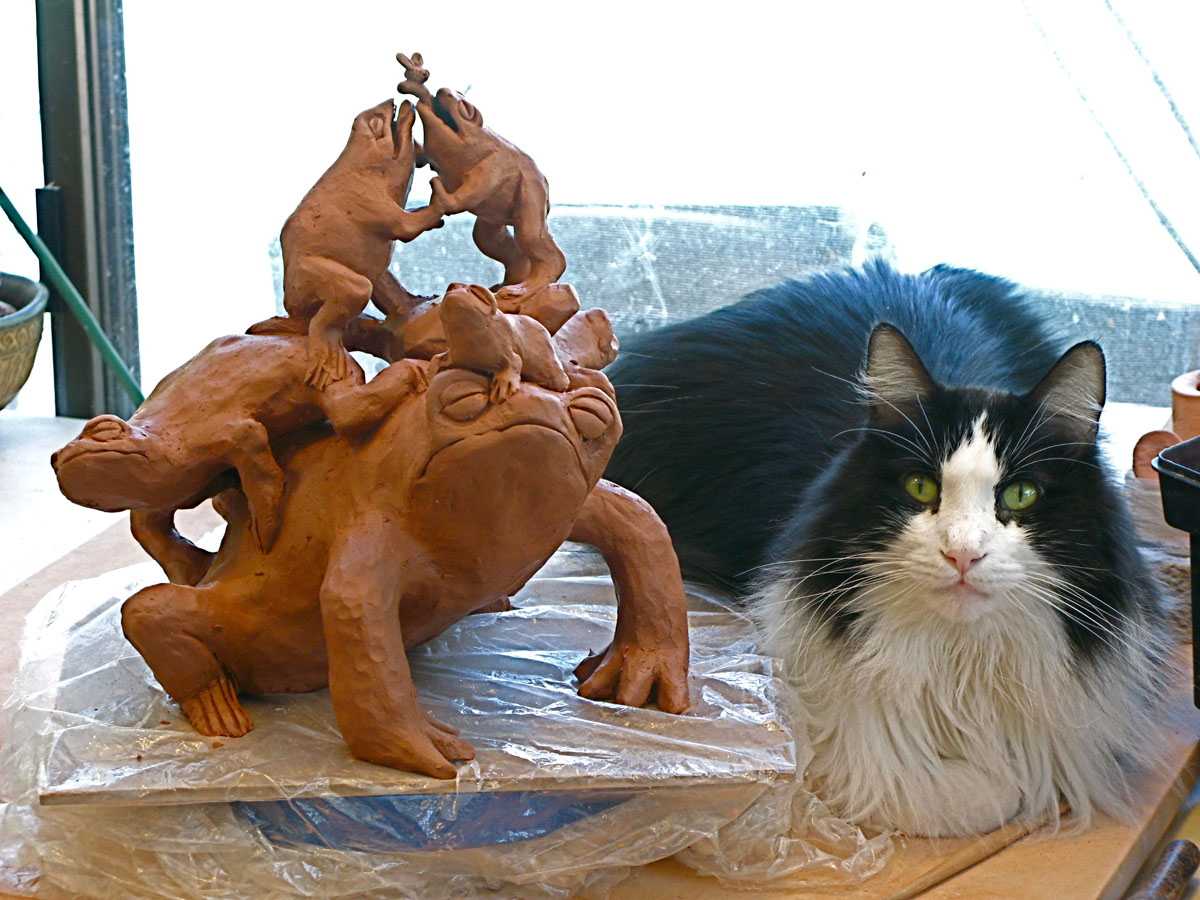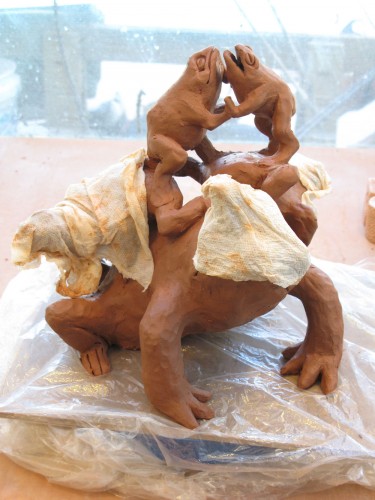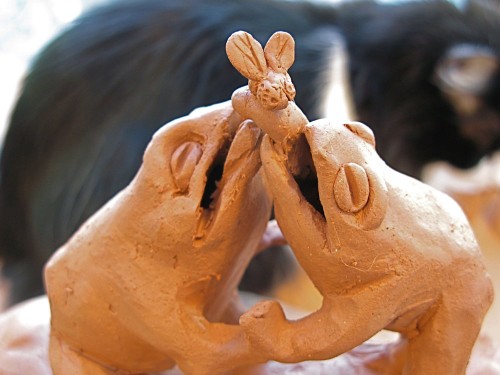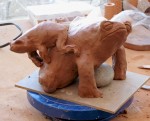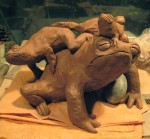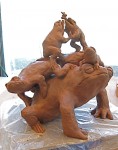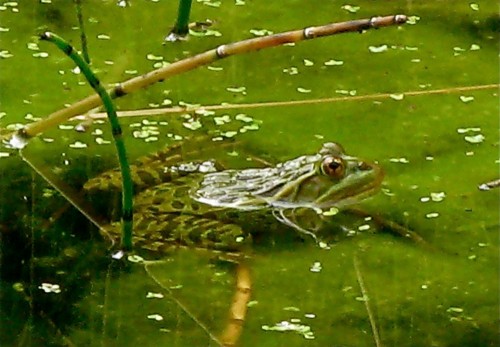Increments: Color me vulture (Sarcoramphus papa), plus a quick field trip to Belize
Another reason I’ve had vultures on the brain is because I owe a friend a vulture. Specifically, a king vulture, Sarcoramphus papa, the largest of the Cathartids, the New World Vultures. They are the largest vulture in our hemisphere if you don’t count the two condors, and they are striking birds (literally — I was given a hammery-beaky once-over by one in captivity long ago, but that’s a different post), with black-and-white plumage and a bare-skinned, froot-loops colored head roped with chicken-skin folds. If that weren’t enough, both genders sport a caruncle on the top of their bills: a warty, fleshy, bright orangey-yellow knob whose purpose, frankly, I don’t know, if not to gild the lily.
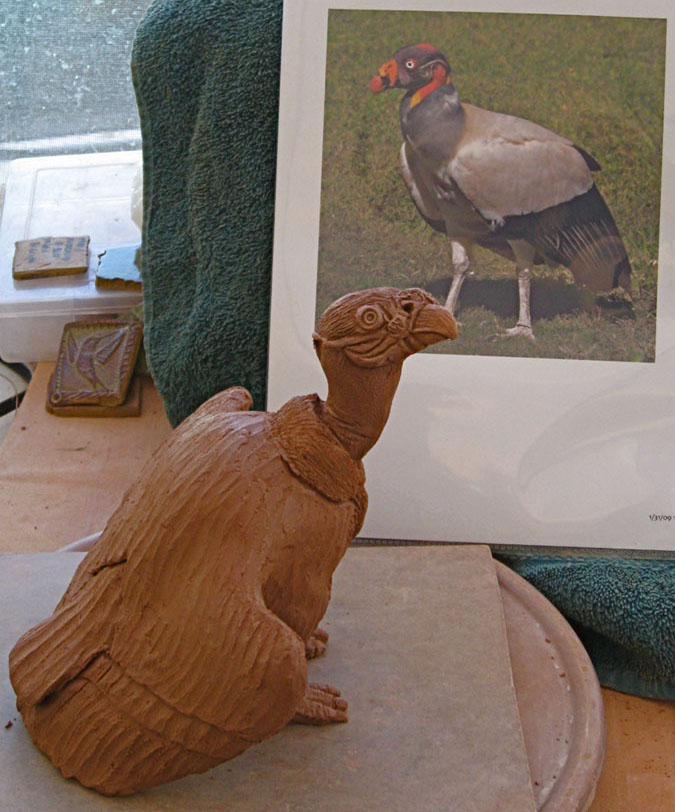 So, here is Jack’s King vulture, in progress, Increment 1. Having modeled the bird, it awaits slip, with a photo behind for plumage color reference. I’ll give it a base coat of slip (“paint” made of clay, mineral colorants, and water) in appropriate colors while the stoneware is still damp. Once it is completely dry, it will go into its first (or bisque) firing. After that it’ll get glazes and other finishing colorants applied, and be fired again.
So, here is Jack’s King vulture, in progress, Increment 1. Having modeled the bird, it awaits slip, with a photo behind for plumage color reference. I’ll give it a base coat of slip (“paint” made of clay, mineral colorants, and water) in appropriate colors while the stoneware is still damp. Once it is completely dry, it will go into its first (or bisque) firing. After that it’ll get glazes and other finishing colorants applied, and be fired again.
As usual with clay, the heaviness of the material requires support, so I’ve had to fudge some physical realities: I can’t make the legs as thin as they are in nature, and I’ve used the wings as the third point of support so the bird stands by itself. Normally, a vulture’s wings, as ample as they are, don’t reach the ground in a standing bird. But other typical characteristics will carry the likeness through: the hunched posture, the partially opened wings, the body plumage color, and of course, pleated froot-loop head.
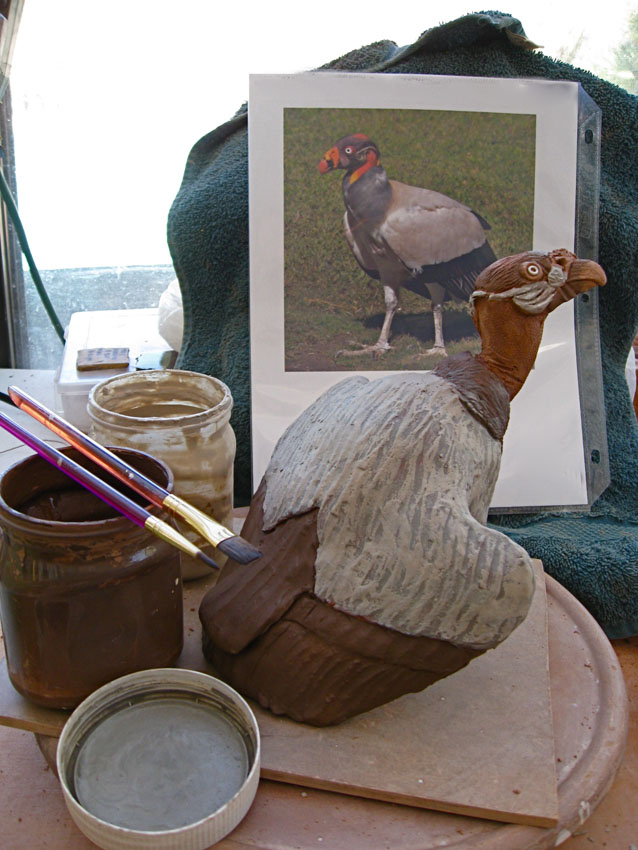 Increment 2: Slip treatment. In this case, the slips were applied with a brush. They will not acheive their finished colors until the final Cone 5 firing. For now, the black looks brown and the white looks grayish. The froot loop colors will be applied as glazes, after bisquing. Now this guy will sit until he’s TOTALLY dry. Also, his body is hollow, and this time I did remember to pierce an inconspicuous hole to the cavity. Stay tuned for later posts for finishing touches.
Increment 2: Slip treatment. In this case, the slips were applied with a brush. They will not acheive their finished colors until the final Cone 5 firing. For now, the black looks brown and the white looks grayish. The froot loop colors will be applied as glazes, after bisquing. Now this guy will sit until he’s TOTALLY dry. Also, his body is hollow, and this time I did remember to pierce an inconspicuous hole to the cavity. Stay tuned for later posts for finishing touches.
Most of us think of vultures as being all-dark birds, like Turkey vultures. But there are predominantly white vultures, like the King. In the Old World, the Egyptian vulture, also a vulture primarily of hot climates, is mostly white-plumaged. You would think a large white bird would be disadvantaged by being easily seen. Actually, King vultures, when roosting and nesting in their tropical forest habitat, are surprisingly difficult to see. Their white feathers reflect the green light passing through the foliage around them, making them blend in quite well. They are somewhat shy despite their regal reputation, and tend to assume a self-effacing posture when perched on a limb. A King vulture in Belize “hid” from us this way. We spotted it on the ground in a field. Feeling our “eyeball pressure” it felt safer flying up into a tree, where it hid its head behind a tiny clump of foliage. The rest of its enormous body remained in plain sight, but it felt better, and would peek out from the leaves occasionally to see if we were gone yet.
In the air, an all-white bird glints in the sun, but of course, up there, they’re out of reach, especially at the altitudes King vultures acheive. It’s a spectacular sight to see the bright wedge of a King, as white and as large as a pelican, rising on thermals over a mahogany forest. The photo below is of just such a Belizean forest as a King vulture would favor. Imagine one soaring just out of frame, with Bat falcons, Swallow-tailed kites, White hawks and other tropical birds of prey swirling on the updrafts from the Escarpment near Chan Chich, one of the few places in that flat country where you can get out and up over the forest.